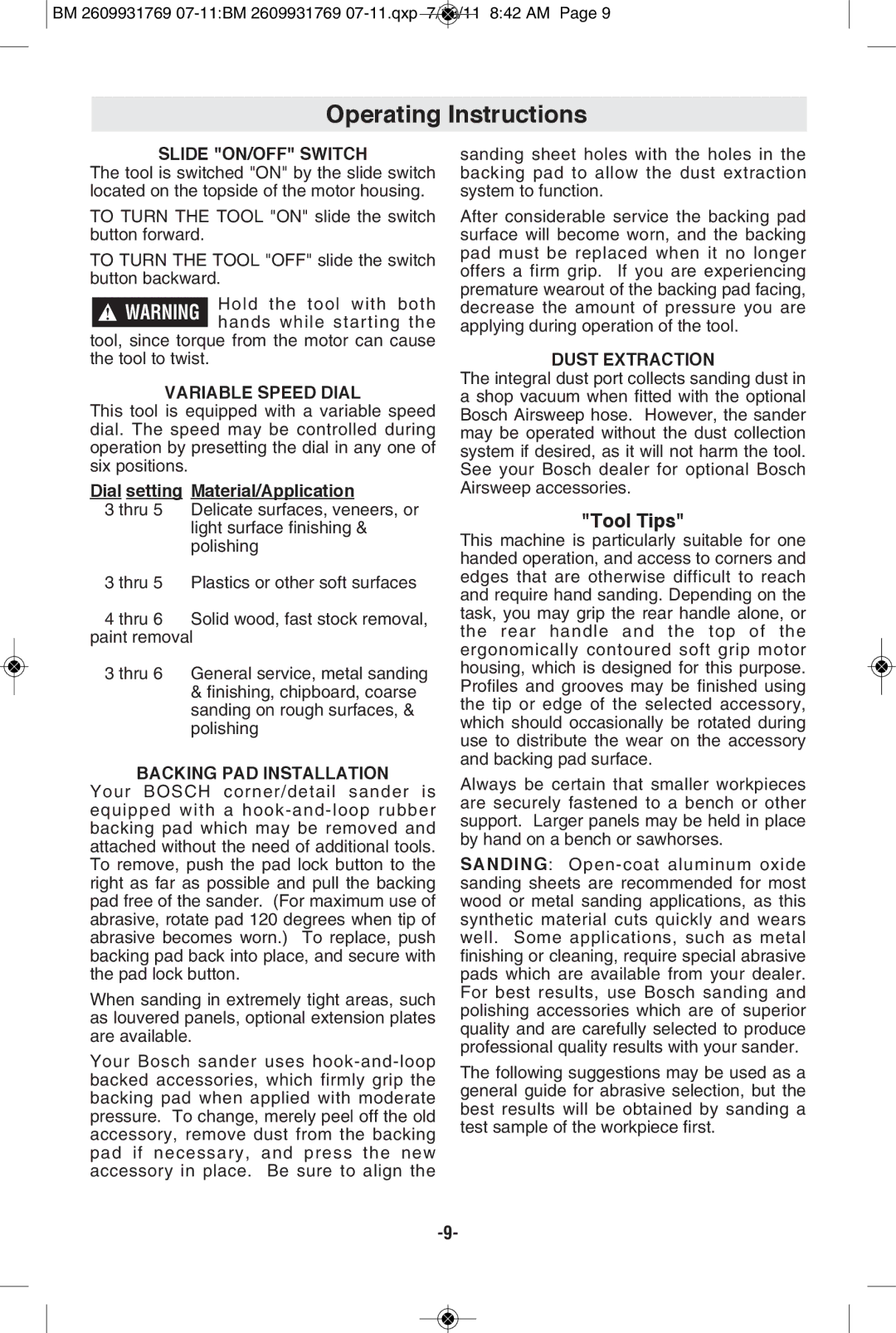
 BM 2609931769
BM 2609931769 07-11:BM 2609931769 07-11.qxp 7/13/11 8:42 AM Page 9
Operating Instructions
SLIDE "ON/OFF" SWITCH
The tool is switched "ON" by the slide switch located on the topside of the motor housing.
TO TURN THE TOOL "ON" slide the switch button forward.
TO TURN THE TOOL "OFF" slide the switch button backward.
!WARNING Hold the tool with both hands while starting the
tool, since torque from the motor can cause the tool to twist.
VARIAbLE SPEED DIAL
This tool is equipped with a variable speed dial. The speed may be controlled during operation by presetting the dial in any one of six positions.
Dial setting | Material/Application |
3 thru 5 | Delicate surfaces, veneers, or |
| light surface finishing & |
| polishing |
3 thru 5 | Plastics or other soft surfaces |
4 thru 6 Solid wood, fast stock removal, paint removal
3 thru 6 General service, metal sanding
&finishing, chipboard, coarse sanding on rough surfaces, & polishing
bACKING PAD INSTALLATION
Your BOSCH corner/detail sander is equipped with a
When sanding in extremely tight areas, such as louvered panels, optional extension plates are available.
Your Bosch sander uses
sanding sheet holes with the holes in the backing pad to allow the dust extraction system to function.
After considerable service the backing pad surface will become worn, and the backing pad must be replaced when it no longer offers a firm grip. If you are experiencing premature wearout of the backing pad facing, decrease the amount of pressure you are applying during operation of the tool.
DUST ExTRACTION
The integral dust port collects sanding dust in a shop vacuum when fitted with the optional Bosch Airsweep hose. However, the sander may be operated without the dust collection system if desired, as it will not harm the tool. See your Bosch dealer for optional Bosch Airsweep accessories.
"Tool Tips"
This machine is particularly suitable for one handed operation, and access to corners and edges that are otherwise difficult to reach and require hand sanding. Depending on the task, you may grip the rear handle alone, or the rear handle and the top of the ergonomically contoured soft grip motor housing, which is designed for this purpose. Profiles and grooves may be finished using the tip or edge of the selected accessory, which should occasionally be rotated during use to distribute the wear on the accessory and backing pad surface.
Always be certain that smaller workpieces are securely fastened to a bench or other support. Larger panels may be held in place by hand on a bench or sawhorses.
SANDING:
The following suggestions may be used as a general guide for abrasive selection, but the best results will be obtained by sanding a test sample of the workpiece first.
